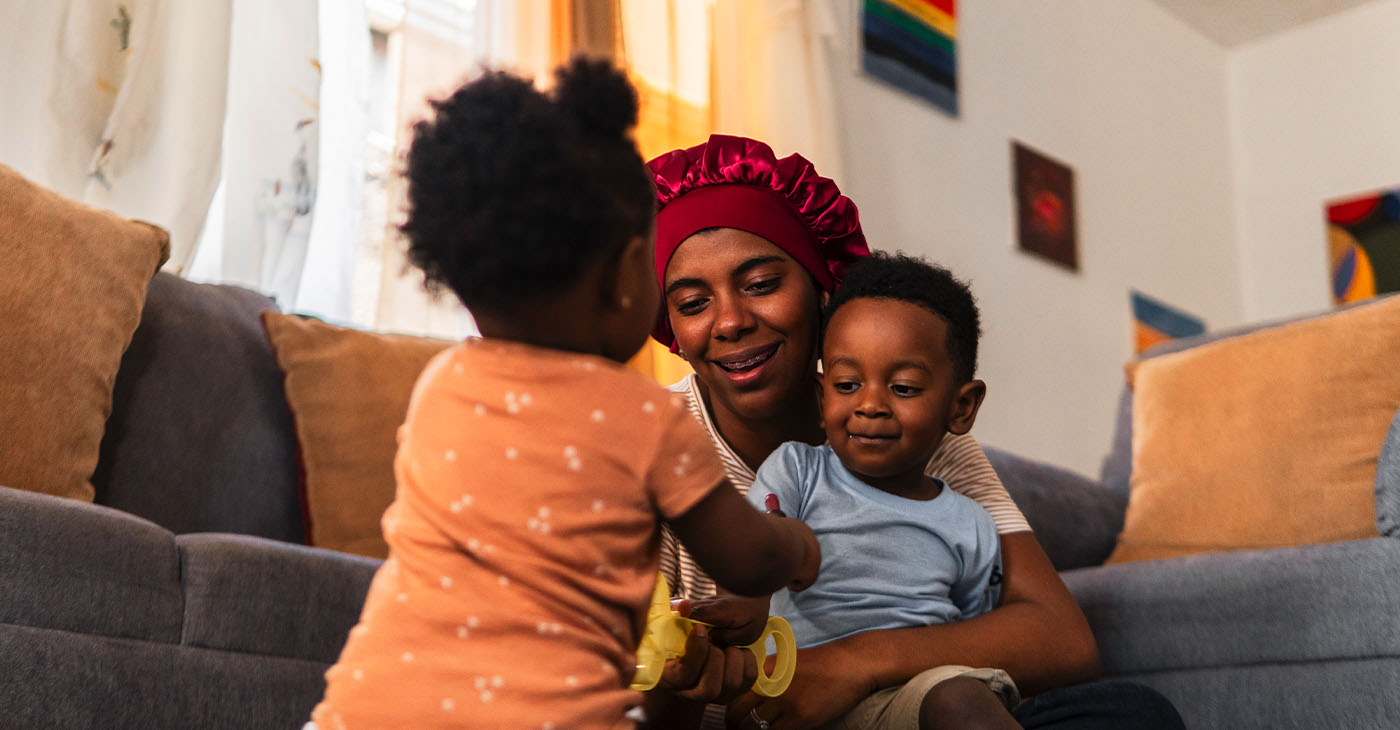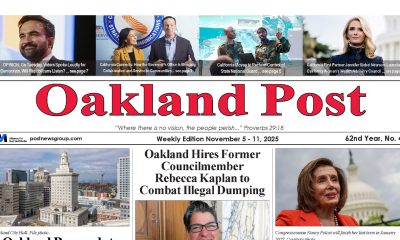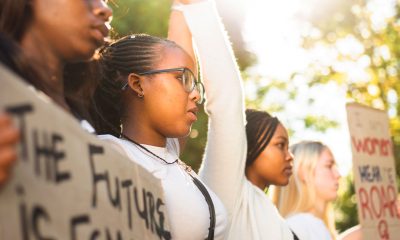#NNPA BlackPress
San Diego Economic Department Seeks Community Input
By Macy Meinhardt, Voice & Viewpoint Staff Writer Residents and non-profit organizations of the community gathered Saturday to discuss their vision on how they would like to see $135 million of federal Housing and Urban Development Funding (HUD) to be spent over the next five years. Every five-years, the City of San Diego compiles a […]
The post San Diego Economic Department Seeks Community Input first appeared on BlackPressUSA.

By Macy Meinhardt, Voice & Viewpoint Staff Writer
Residents and non-profit organizations of the community gathered Saturday to discuss their vision on how they would like to see $135 million of federal Housing and Urban Development Funding (HUD) to be spent over the next five years.
Every five-years, the City of San Diego compiles a consolidated plan document to identify community needs and priorities. The consolidated plan is a combination of data and community outreach that determines top housing needs, community development concerns, and gaps in supportive services for low and moderate income populations.
For the 2025-2029 plan, San Diego’s economic development team and city consultants engaged with residents and local nonprofit organizations, including the Black American Political Association’s SD chapter, (BAPAC) in recent open forums.
Serving as the forums host, BAPAC’s efforts work to ensure the economic, social, and political force of the Black community in San Diego remain relevant. Leading the Oct. 21 forum was David P. Dollahan of DPD solutions who serves as the city’s five year plan consultant. In addition, Abena Bradford served as the moderator on behalf of BAPAC, whose nonprofit members were also in attendance to advocate for HUD funding to be prioritized for their community. Affordable housing, street-repair, homelessness, equity, job opportunities, and sustainability were some of the many topics brought up for funding allocation.
Bradford, who also serves as chair for the consolidated plan advisory board, spoke on the importance of non-profit collaborative efforts with government. “Nonprofits provide services to the community that the government sometimes can not reach. That’s how important non-profits are, and that’s why it is important we have an opportunity to make a contribution and let our voices be heard,” said Braford.
Dollahan broke down the four main funding sources within the $135 million of HUD funds for the audience members to consider. These areas include the Community Development Block Grant, which is designed to improve low to moderate income communities. The Home investment Partnership Program, which regards affordable housing creation, the Emergency Solutions Grant, which targets getting people removed from homelessness. And lastly, the Housing Opportunities for Persons with AIDS program, which connects people’s housing with medical social support services.
“These are the four preeminent housing programs that the community, I feel, gets to have a say in how the money is spent and where it goes,” said Dollahan.
Although known for our sunny beaches and thriving economy, for years San Diego has been in the midst of a dual crisis as we grapple with both a housing shortage and a rising homelessness problem. While city leaders such as Councilmember Stephen Whitburn promised in 2020 campaign elections that “At the end of my term, there will be very few people left unsheltered in San Diego,” the numbers tell a different story. In fact, between 2021 to 2022, homelessness rates rose by 22 percent.
Multiple homelessness advocates came out to the forum to speak on where local and national funding priorities should be allocated to, but are not currently.
“I just want to put this into the atmosphere. We find $9 billion for war. I don’t want anybody to tell me there is never enough money for homeless people. There is always enough money to do what people want to do, but never enough money to do what we need to do,” said one attendee.
“There are plenty of mechanisms out there to identify funding sources that require a political will to be changed at the local levels,” said Dollahan, in response. With the District 4 special election coming up Nov. 7, the city consultant emphasized the significance of actively participating and staying informed in local government and nonprofit organizations—as these are the crucial areas where citizens can have the greatest impact on their community.
Meanwhile, other community members spoke on the premise of affordable housing. The city’s soaring housing costs, in combination with limited affordable options, have forced many residents out of their homes. In addition, waitlists for section-eight housing are incredibly long within the city. According to the San Diego Housing Commission, current waitlists are at approximately twelve years. Selecting funding prioritization into programs such as Home Investment Partnership Program can help streamline that process.
Furthermore, the forum also hosted a series of activities for attendees to participate in at the end to help the Economic Department solicit further input. In addition residents were also directed to fill out a survey that asked residents to rank service need priorities.
“Share it with your families, share it with your friends, share it with people who own businesses in San Diego, share it with your employees, share it with everyone,” Dollahan encouraged.
The survey link can be accessed by scanning your device over the QR code attached to this article. The link will take users to the city’s Consolidated Plan webpage. Survey can be found by scrolling down to the “Community Needs Survey” section. Input gathered from the surveys and series of forums will be implemented into the drafting process, which is expected to be published in March of 2024. In that time residents will be asked back again to give their feedback and critiques on the draft before the final document is submitted.
This article originally appeared in San Diego Voice and Viewpoint.
The post San Diego Economic Department Seeks Community Input first appeared on BlackPressUSA.
#NNPA BlackPress
LIHEAP Funds Released After Weeks of Delay as States and the District Rush to Protect Households from the Cold
BLACKPRESSUSA NEWSWIRE — The federal government has released $3.6 billion in home heating assistance after a delay that left states preparing for the start of winter without the program’s annual funding.

By Stacy M. Brown
Black Press USA Senior National Correspondent
The federal government has released $3.6 billion in home heating assistance after a delay that left states preparing for the start of winter without the program’s annual funding. The Low-Income Home Energy Assistance Program, known as LIHEAP, helps eligible households pay heating and cooling bills. The release follows a shutdown that stretched 43 days and pushed agencies across the country to warn families of possible disruptions.
State officials in Minnesota, Kansas, New York, and Pennsylvania had already issued alerts that the delay could slow the processing of applications or force families to wait until December for help. In Pennsylvania, more than 300,000 households depend on the program each year. Minnesota officials noted that older adults, young children, and people with disabilities face the highest risk as temperatures fall.
The delay also raised concerns among advocates who track household debt tied to rising utility costs. National Energy Assistance Directors Association Executive Director Mark Wolfe said the funds were “essential and long overdue” and added that high arrearages and increased energy prices have strained families seeking help.
Some states faced additional pressure when other services were affected by the shutdown. According to data reviewed by national energy advocates, roughly 68 percent of LIHEAP households also receive nutrition assistance, and the freeze in multiple programs increased the financial burden on low-income residents. Wolfe said families were placed in “an even more precarious situation than usual” as the shutdown stretched into November.
In Maryland, lawmakers urged the Trump administration to release funds after the state recorded its first cold-related death of the season. The Maryland Department of Health reported that a man in his 30s was found outdoors in Frederick County when temperatures dropped. Last winter, the state documented 75 cold-related deaths, the highest number in five years. Rep Kweisi Mfume joined more than 100 House members calling for immediate federal action and said LIHEAP “is not a luxury” for the 100,000 Maryland households that rely on it. He added that seniors and veterans would be placed at risk if the program remained stalled.
Maryland Gov. Wes Moore used $10.1 million in state funds to keep benefits moving, but noted that states cannot routinely replace federal dollars. His administration said families that rely on medical equipment requiring electricity are particularly vulnerable.
The District of Columbia has already mapped out its FY26 LIHEAP structure in documents filed with the federal government. The District’s plan shows that heating assistance, cooling assistance, weatherization, and year-round crisis assistance operate from October 1 through September 30. The District allocates 50 percent of its LIHEAP funds to heating assistance, 10 percent to cooling, 13 percent to year-round crisis assistance, 15 percent to weatherization, and 10 percent to administrative costs. Two percent is used for services that help residents reduce energy needs, including education on reading utility bills and identifying energy waste.
The District’s plan lists a minimum LIHEAP benefit of $200 and a maximum of $1,800 for both heating and cooling assistance. Crisis benefits are provided separately and may reach up to $500 when needed to resolve an emergency. The plan states that a household is considered in crisis if it has been disconnected from energy service, if heating oil is at 5 percent or less of capacity, or if the household has at least $200 owed after the regular benefit is applied.
The District’s filing notes that LIHEAP staff conduct outreach through community meetings, senior housing sites, Advisory Neighborhood Commissions, social media, posters, and mass mailings. The plan confirms that LIHEAP applicants can apply in person, by mail, by email, or through a mobile-friendly online application and that physically disabled residents may request in-home visits.
As agencies nationwide begin distributing the newly released funds, states continue working through large volumes of applications. Wolfe said LIHEAP administrators “have been notified that the award letters have gone out and the states can begin to draw down the funds.”
#NNPA BlackPress
Seven Steps to Help Your Child Build Meaningful Connections
BLACKPRESSUSA NEWSWIRE — Swinging side by side with a friend on the playground. Sharing chalk over bright, colorful sidewalk drawings. Hiding behind a tree during a spirited game of hide-and-seek. These simple moments between children may seem small, but they matter more than we think

By Niyoka McCoy, Ed.D., Chief Learning Officer, Stride/K12
Swinging side by side with a friend on the playground. Sharing chalk over bright, colorful sidewalk drawings. Hiding behind a tree during a spirited game of hide-and-seek. These simple moments between children may seem small, but they matter more than we think: They lay the foundation for some of life’s most important skills.
Through everyday play, young children begin learning essential social and emotional skills like sharing, resolving conflicts, showing empathy, and managing their emotions. These social skills help shape emotional growth and set kids up for long-term success. Socialization in early childhood isn’t just a “nice-to-have”—it’s essential for development.
Yet today, many young children who haven’t yet started school aren’t getting enough consistent, meaningful interaction with peers. Research shows that there’s a decline in active free play and peer socialization when compared to previous generations.
There are many reasons for this. Children who are home with a parent during the day may spend most of their time with adults, limiting opportunities for peer play. Those in daycare or preschool may have restricted free play, and large classrooms can reduce supervision and social coaching. Some children live in rural areas, are homebound due to illness, have full schedules, or rely on screens to fill their playtime. And for some families, finding other families with young children to connect with isn’t easy.
While these challenges can feel significant, opportunities for connection still exist in every community. Families can take simple steps to help children build friendships, create a sense of belonging, and strengthen social skills. Here are some ideas to get started:
- Storytime sessions at libraries or local bookstores
- Community offerings such as parent-child workshops, art, music, gymnastics, swimming, or sports programs
- Weekly events at children’s museums, which may include art projects, music workshops, or science experiments
- Outdoor exploration, where kids can play with peers
- Local parenting groups that organize playdates and group activities
- Volunteer opportunities where children can participate, such as pet adoption events or packing meals at a food bank
- Classes for kids at local businesses, including hardware, grocery, or craft stores
Some of these community activities are free or low-cost and give kids the chance to build friendships and practice social skills. Parents can also model positive social behavior by interacting with other parents and encouraging their children to play with their peers.
These may seem like small moments of connection, but they can have a powerful impact. Every time your child shares a toy, plays make-believe with peers, or races a friend down the slide, they’re not just playing—they’re learning the skills that build confidence, empathy, and lasting friendships. And it’s good for you, too. Creating intentional opportunities for play also helps you strengthen your own network of parents who can support one another as your children grow together.
#NNPA BlackPress
Seven Steps to Help Your Child Build Meaningful Connections
BLACKPRESSUSA NEWSWIRE — Swinging side by side with a friend on the playground. Sharing chalk over bright, colorful sidewalk drawings. Hiding behind a tree during a spirited game of hide-and-seek. These simple moments between children may seem small, but they matter more than we think

By Niyoka McCoy, Ed.D., Chief Learning Officer, Stride/K12
Swinging side by side with a friend on the playground. Sharing chalk over bright, colorful sidewalk drawings. Hiding behind a tree during a spirited game of hide-and-seek. These simple moments between children may seem small, but they matter more than we think: They lay the foundation for some of life’s most important skills.
Through everyday play, young children begin learning essential social and emotional skills like sharing, resolving conflicts, showing empathy, and managing their emotions. These social skills help shape emotional growth and set kids up for long-term success. Socialization in early childhood isn’t just a “nice-to-have”—it’s essential for development.
Yet today, many young children who haven’t yet started school aren’t getting enough consistent, meaningful interaction with peers. Research shows that there’s a decline in active free play and peer socialization when compared to previous generations.
There are many reasons for this. Children who are home with a parent during the day may spend most of their time with adults, limiting opportunities for peer play. Those in daycare or preschool may have restricted free play, and large classrooms can reduce supervision and social coaching. Some children live in rural areas, are homebound due to illness, have full schedules, or rely on screens to fill their playtime. And for some families, finding other families with young children to connect with isn’t easy.
While these challenges can feel significant, opportunities for connection still exist in every community. Families can take simple steps to help children build friendships, create a sense of belonging, and strengthen social skills. Here are some ideas to get started:
- Storytime sessions at libraries or local bookstores
- Community offerings such as parent-child workshops, art, music, gymnastics, swimming, or sports programs
- Weekly events at children’s museums, which may include art projects, music workshops, or science experiments
- Outdoor exploration, where kids can play with peers
- Local parenting groups that organize playdates and group activities
- Volunteer opportunities where children can participate, such as pet adoption events or packing meals at a food bank
- Classes for kids at local businesses, including hardware, grocery, or craft stores
Some of these community activities are free or low-cost and give kids the chance to build friendships and practice social skills. Parents can also model positive social behavior by interacting with other parents and encouraging their children to play with their peers.
These may seem like small moments of connection, but they can have a powerful impact. Every time your child shares a toy, plays make-believe with peers, or races a friend down the slide, they’re not just playing—they’re learning the skills that build confidence, empathy, and lasting friendships. And it’s good for you, too. Creating intentional opportunities for play also helps you strengthen your own network of parents who can support one another as your children grow together.
-

 Activism3 weeks ago
Activism3 weeks agoOakland Post: Week of November 12 – 18, 2025
-

 Activism4 weeks ago
Activism4 weeks agoOakland Post: Week of November 5 – 11, 2025
-

 Activism2 weeks ago
Activism2 weeks agoIN MEMORIAM: William ‘Bill’ Patterson, 94
-

 Activism3 weeks ago
Activism3 weeks agoHow Charles R. Drew University Navigated More Than $20 Million in Fed Cuts – Still Prioritizing Students and Community Health
-

 #NNPA BlackPress3 weeks ago
#NNPA BlackPress3 weeks agoThe Perfumed Hand of Hypocrisy: Trump Hosted Former Terror Suspect While America Condemns a Muslim Mayor
-

 #NNPA BlackPress3 weeks ago
#NNPA BlackPress3 weeks agoProtecting Pedophiles: The GOP’s Warped Crusade Against Its Own Lies
-

 Bay Area3 weeks ago
Bay Area3 weeks agoNo Justice in the Justice System
-

 #NNPA BlackPress4 weeks ago
#NNPA BlackPress4 weeks ago2026 Subaru Forester Wilderness Review: Everyday SUV With Extra Confidence





















































